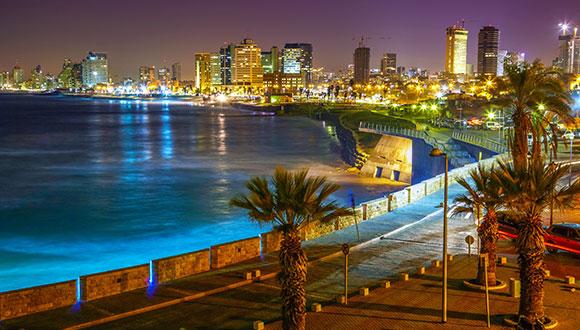About Tel Aviv
Known as "The City That Never Sleeps", Tel-Aviv is a popular tourism destination and is renowned for its 24-hour culture, beaches, bars, restaurants, cafés, parks, shopping, and cosmopolitan lifestyle. Tel Aviv is the country's financial capital and a major performing arts and business center.
The rainy season is from mid-November to mid-March, with approximately ten rainy days per month during this season. Bring warm winter clothing, including raincoat/winter coat and umbrella. While it may be cold outdoors, most indoor facilities (including dormitory rooms) are centrally heated. The summers are hot, and the humidity is high, especially around July-September, so bring light-weight clothing.
Tel-Aviv is divided to a few main districts that have formed over the city's short history. Amongst them you may find:
-
Jaffa the ancient port city. This area is traditionally made up demographically of a greater percentage of Arabs, but also of Jewish students and artist population.
-
Neve Tzedek , which is located in southwestern Tel-Aviv, and is a fashionable upmarket residence for Tel Avivians with a village-like atmosphere.
-
Kerem HaTeimanim is located in the center of Tel-Aviv, adjacent to the Carmel Market and Allenby Street, and is close to Geula Beach. It is described as a lower middle-class neighbourhood, with a high level of educated and cultured Israelis.
-
Rothschild Boulevard is one of the main streets in the center of Tel-Aviv. It is one of the busiest streets in the city, being one of the city's main tourist attractions.
-
Ramat Aviv is a district in the northern part of the city, that is largely made up of luxury apartments and includes the Tel-Aviv University.
-
Bavli is a neighborhood in central Tel-Aviv, located close to Hayarkon Park.
It is considered a mostly upper middle class neighborhood, with a majority of families living within the area.


